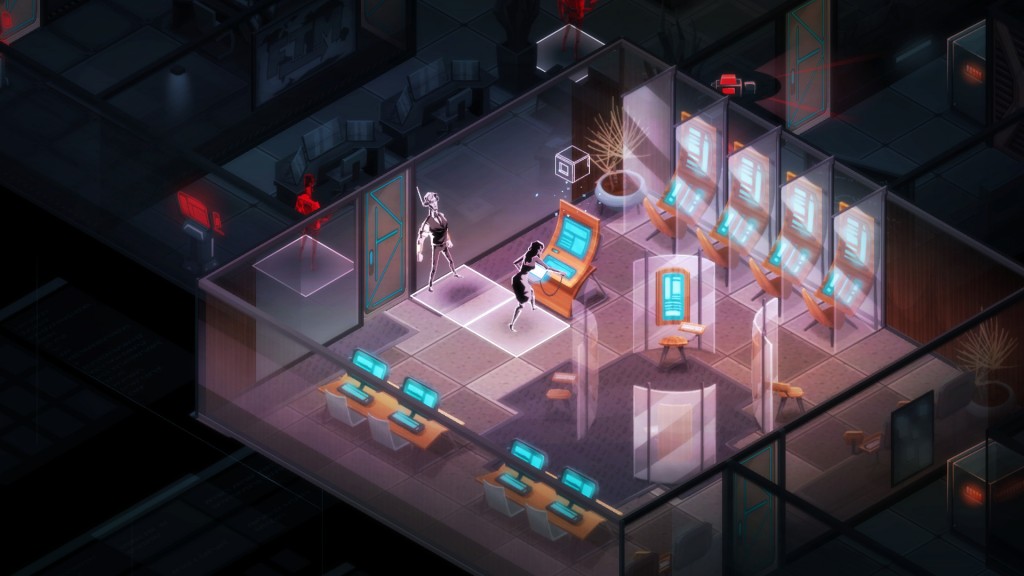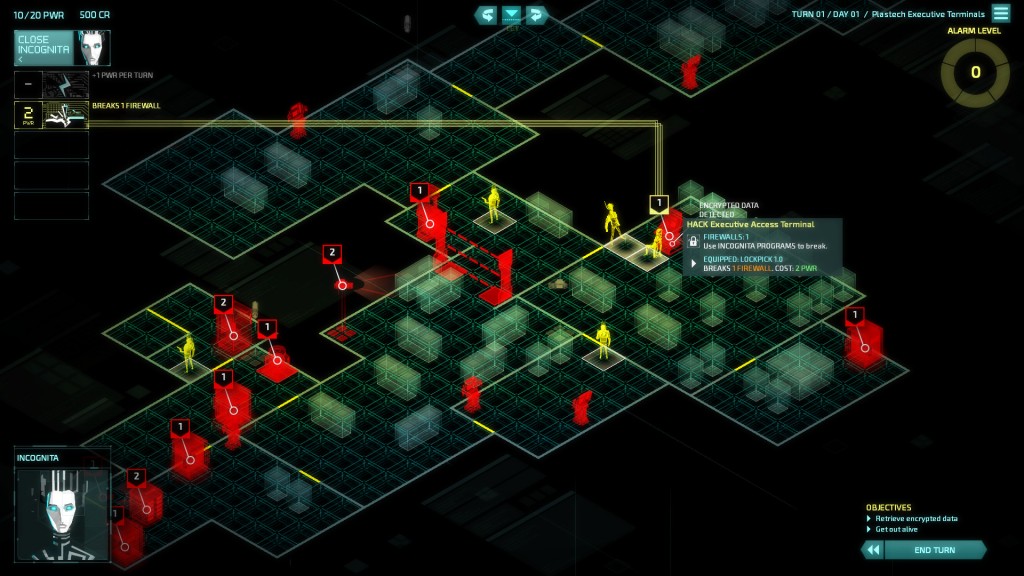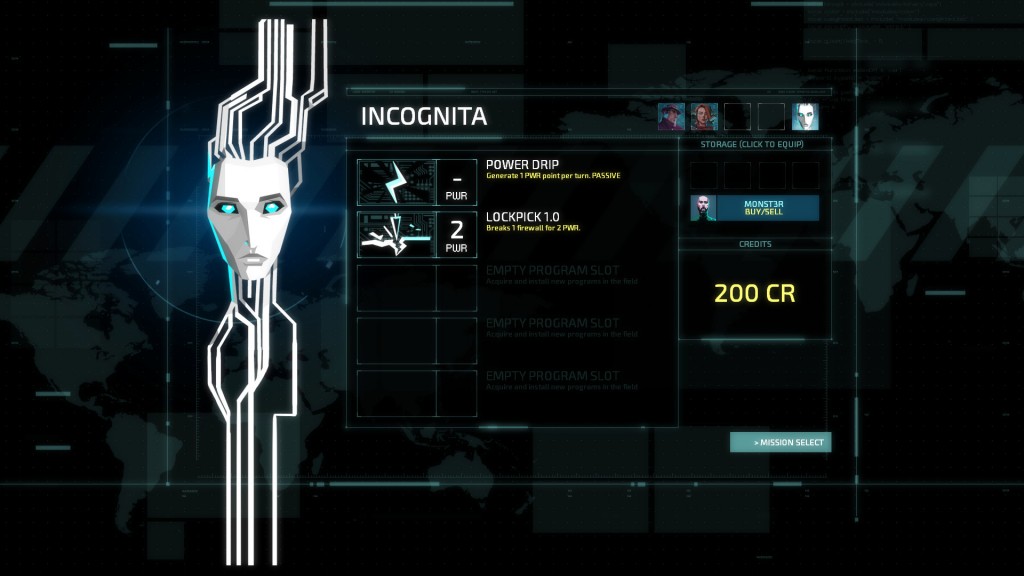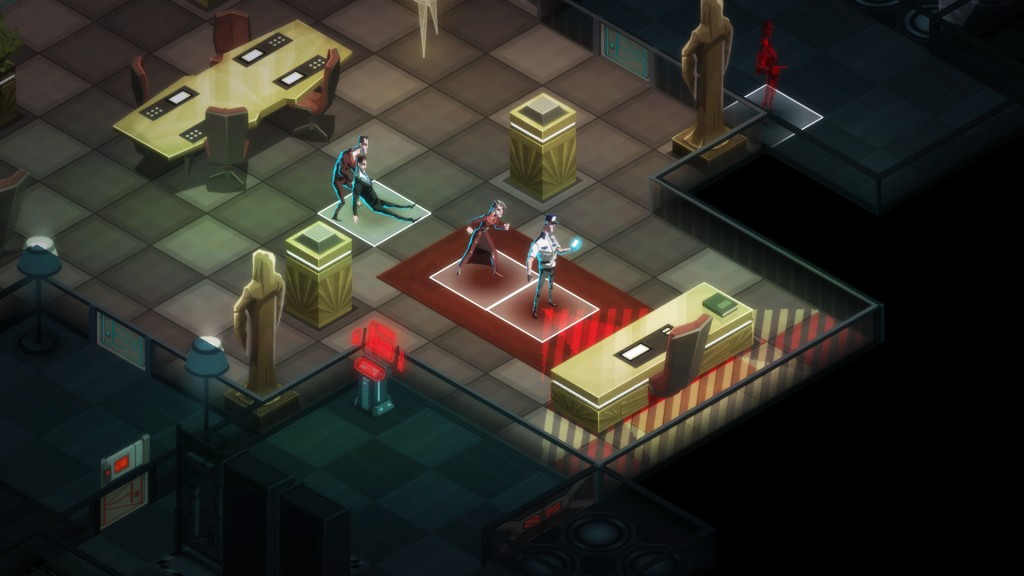
Invisible, Inc. is a perfect storm of a game. The tactical grid-based gameplay has a lot of depth and allows for a ton of strategic decisions, the spy-vs.-spy aesthetic transports you to a world of espionage and the roguelike randomness keeps you coming back over and over again to achieve that elusive “perfect” run. Every action has weight, and one wrong move can doom an entire mission. With numerous difficulty sliders to tune the experience, though, Invisible, Inc. is also an extremely accessible title that succeeds in training the player to tackle its more difficult challenges gradually without being frustrating.
The missions of Invisible, Inc. are played on isometric grid, on which you and the enemy alternate strategic turns moving units, settings traps and taking actions. Every move you make feels important, however, because if one of your units is spotted by the enemy without an escape plan, it will likely be killed. Most of your turns, then, have you placing your units along walls, peering around edges and through doors to see the enemy placement in the room ahead, then devising a strategy for quickly and efficiently neutralizing the present threats.
The ways in which you do this feel limitless, as you have the freedom to approach the various situations presented in almost any way a modern spy could. You can try baiting the enemy with one unit while another sneaks in behind, you can hack surveillance equipment to your advantage or you can cause distractions in remote areas. The key element, though, is staying in control the entire time. You need to be the one dictating where the enemy is focused, and you need to plan a few moves ahead, because any surprises can spell disaster quickly.

The game’s feel is in many ways similar to XCOM: Enemy Unknown. In both of these titles, death is permanent, rewinds aren’t allowed and it is entirely possible to fail and be forced to restart. Invisible, Inc.‘s protagonists only have 72 hours to mount an offensive and strike at the enemy. This means that you need to be selective in what missions you take, balancing the available rewards of intel, experience and allies, against the inevitable time commitment that undertaking the mission would toll.
A full typical run can be completed in a matter of only a few real-world hours, and this is important, because it is highly likely that your first few tries will end in failure. This can be due to either not acquiring the necessary resources needed for the final push in time or because of a failed mission, but either way these failures lead to learning and, later, success.
The missions in Invisible, Inc. are all procedurally generated, so replaying doesn’t feel onerous, and the difficulty of the overall game structure is highly adjustable. There are a number of preset difficulties available, from introductory modes to extremely difficult challenges, but beyond this you can set your own difficulty by changing nearly any individual aspect of the game itself. You can decide how many hours you have before the final mission, how many times you can rewind a move during a mission, if you can load earlier saves to make up for failures and if death is permanent.

This high level of customization is amazing for a novice to this genre, as it provides a relatively stress-free way to experience the game and learn how it works while slowly increasing the level of difficulty to absurd realms. The game even provides alternative ways to play, like an endless mode that just lets you keep the spy organization afloat as long as possible. Invisible, Inc. provides the structure for the extreme challenge for those that want it, but it doesn’t dictate the way someone should have fun, which is refreshing and something that more developers should consider.
The exaggerated cartoon art style works well, and the atmosphere of the game is pervasive. When sneaking through the various missions, you get a very clear sense of tension and anticipation with every glance around a corner, but with a few button presses you can change the map to a minimalistic view which gives you a clear look at the things you need for making the necessary decisions. The game has a very clean look, which benefits the deep tactical gameplay by not obscuring the different elements at play.
There are a number of different allies, all with different stats and abilities, and with the limited time available for each run, there is no way to use everyone or try all the different skills in any one playthrough. This basically requires you to restart and try again after finishing once just to see more of the available options. This might seem like a drawback, but these replays are actually essential to discovering just why the game is so addictive. When you see the level of improvement in your second playthrough, you also start to notice your mistakes, and this makes the pursuit of the perfect run ever more enticing.

The level of strategy and thought in Invisible, Inc., along with the quick play times and exciting action, give it more replay value than a single-player game reasonably should. It’s the type of game I continue to think about between sessions, and an errant move sticks with me like a missed life opportunity, playing over and over in my mind. In fact… I think I need to go start another run.
Pros: Deep strategy, highly customizable challenge, moody aesthetic
Cons: Occasionally unpredictable moments can ruin perfect runs



















